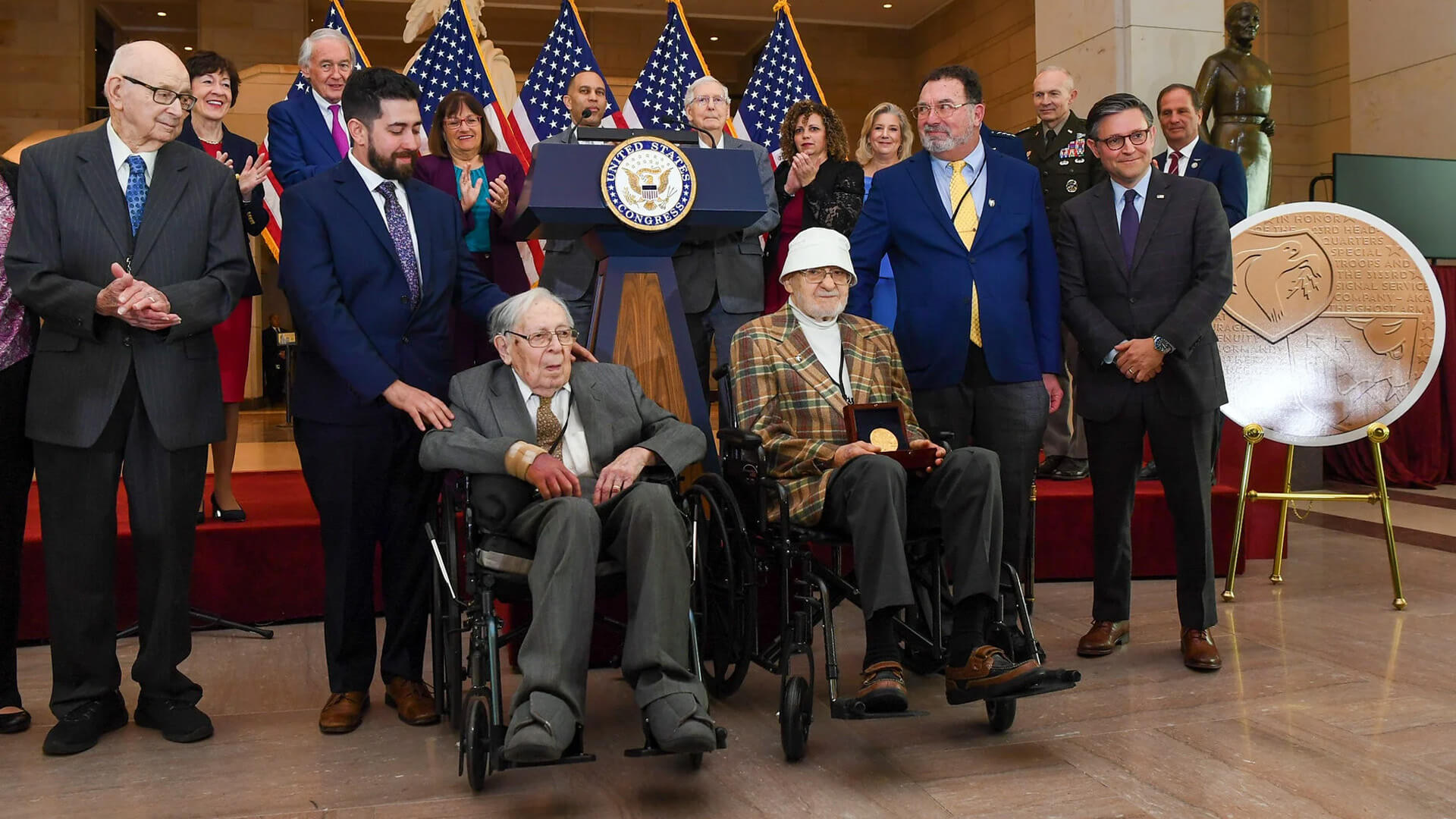‘Ghost Army’ Receives Congressional Gold Medal
‘Ghost Army’ Receives Congressional Gold Medal

During a ceremony on Capitol Hill, three surviving members of the “Ghost Army,” a special unit that used visual, sonic and radio deception against German forces during World War II, were presented with the Congressional Gold Medal.
Bernard Bluestein, John Christman and Seymour Nussenbaum are among just seven surviving members of the Army’s 23rd Headquarters Special Troops, according to The Ghost Army Legacy Project, a nonprofit dedicated to preserving and honoring the soldiers who served in the unit.
Bluestein and Nussenbaum served in the visual deception unit, the 63rd Engineer Camouflage Battalion, and are now both 100 years old, according to the nonprofit. Christman, 99, was a demolition specialist in the 406th Engineer Combat Company.
“I’m very proud and happy to be here to receive this honor,” Bluestein said during the March 21 ceremony.
It’s been 80 years since the Ghost Army landed in France during World War II, said Ricky Beyer, president of The Ghost Army Legacy Project, which spearheaded the nine-year effort to secure the Congressional Gold Medal for the soldiers. “This is a day that’s been a long time coming,” Beyer said.
Army Secretary Christine Wormuth said the Ghost Army’s actions helped change the course of World War II. “The Ghost Army were master storytellers. Many of the techniques you all pioneered can still be found on the battlefield today,” she said. “Your story continues to inspire thousands of men and women in our Army today.”
The Congressional Gold Medal is the “highest expression of national appreciation,” and it is given “for distinguished achievements and contributions by individuals or institutions,” according to a Senate website.
The 23rd Headquarters Special Troops was activated in January 1944 with the sole mission of deceiving German forces during World War II, according to the Army. Nicknamed the Ghost Army, the soldiers were “a carefully selected group of artists, engineers, professional soldiers, and draftees,” and they made up the first mobile, multimedia, tactical deception unit in U.S. Army history, according to the National World War II Museum.
To mislead the enemy, they used inflatable tanks and artillery, sent false radio transmissions, and blasted audio recordings of troop movement and construction to create phantom forces, according to the Army. “Armed with nothing heavier than .50 caliber machine guns, the 23rd took part in 22 large-scale deceptions in Europe from Normandy to the Rhine River,” according to the National World War II Museum.
The unit of about 1,100 soldiers, commanded by Col. Harry Reeder, was capable of simulating two divisions—about 30,000 troops, according to the museum.
The 23rd conducted its first “full-scale deception” effort with Operation Elephant, from July 1–4, 1944, according to the museum. Its sister unit, the 3133rd Signal Company Special, operated in Italy and carried out two deceptions as the war there neared an end, according to the museum.
“The United States is eternally grateful to the soldiers of the 23d Headquarters Special Troops and the 3133d Signal Service Company for their proficient use of innovative tactics during World War II, which saved lives and made significant contributions to the defeat of the Axis powers,” according to the Ghost Army Congressional Gold Medal Act.
An Army analysis quoted in the act emphasizes the unit’s contributions: “Rarely, if ever, has there been a group of such a few men which had so great an influence on the outcome of a major military campaign.”

